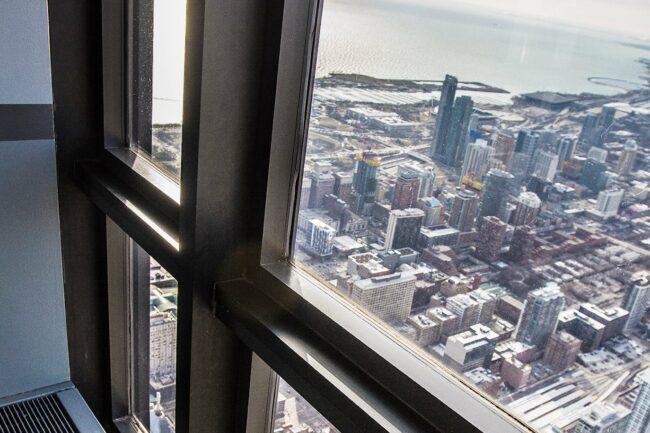In today’s world, the importance of energy efficiency cannot be overstated. With increasing awareness of climate change and rising energy costs, individuals and businesses seek ways to reduce their energy consumption and environmental impact. One effective solution that is gaining popularity is energy-efficient tint.
In this blog, we will explore the world of energy-efficient tint, its benefits, cost savings, environmental impact, and important factors to consider before installation.
Understanding Energy-Efficient Tint
Energy-efficient tint, also known as window film or solar window film, is a thin, transparent layer applied to windows to improve their energy efficiency. This tint works by reflecting or absorbing solar heat, reducing the heat that enters a building through the windows. Additionally, some types of energy-efficient tints also block harmful ultraviolet (UV) rays and enhance privacy by reducing visibility from the outside.
Several types of energy-efficient tint are available in the market, each with its own features and benefits. These include traditional solar control films, low-emissivity (Low-E) films, and spectrally selective films. Traditional solar control films are designed to block a certain percentage of solar heat, while Low-E films also help to retain heat during colder months. Spectrally selective films are designed to allow visible light to enter while blocking heat and UV rays, making them ideal for maintaining natural light while reducing heat gain.
Benefits of Energy-Efficient Tint
Energy-efficient tint offers a myriad of benefits for both residential and commercial spaces. Let’s explore some of the key advantages:
Reduced Energy Consumption
One of the primary benefits of energy-efficient tint is its ability to reduce energy consumption significantly. By blocking a portion of the solar heat that enters through windows, tinted films help to regulate indoor temperatures more effectively. This means air conditioning systems can work less hard during hot summer to maintain a comfortable indoor environment. As a result, energy-efficient tints can substantially reduce energy usage, translating to lower electricity bills and decreased reliance on fossil fuels for power generation.
Lower Utility Bills
With reduced energy consumption comes lower utility bills. By minimizing the need for excessive cooling during hot weather, energy-efficient tint helps to mitigate peak demand for electricity, which is often more expensive for consumers. Additionally, in colder climates, certain types of energy-efficient tints can help retain heat indoors, reducing the need for heating during winter. This combination of energy savings can result in noticeable reductions in utility expenses over time, providing a tangible return on investment for tint installation.
Improved Comfort and Privacy
Energy-efficient tint not only helps to regulate indoor temperatures but also enhances overall comfort levels for occupants. By reducing solar glare and controlling the amount of sunlight that enters a space, tinted windows create a more pleasant indoor environment with fewer fluctuations in temperature. Moreover, tinted films can enhance privacy by limiting visibility from the outside. This is particularly beneficial for homes and offices located in busy urban areas or high-traffic areas where privacy is a concern.
Protection from Harmful UV Rays
Another significant advantage of energy-efficient tint is its blocking of harmful ultraviolet (UV) rays. These rays, which are emitted by the sun, can cause damage to skin and eyes with prolonged exposure. Additionally, UV rays can fade and deteriorate interior furnishings such as furniture, flooring, and artwork over time. By installing an energy-efficient tint, you create a protective barrier that filters out a significant portion of UV radiation, helping to safeguard both occupants and interior decor from the adverse effects of sun exposure.
Extended Lifespan of Furniture and Interiors
In addition to protecting against UV damage, energy-efficient tints can also help to extend the lifespan of interior furnishings and finishes. By reducing heat and solar glare, tinted films minimize the risk of fading, warping, or discoloration caused by excessive sunlight. This means that your furniture, flooring, and other interior surfaces will maintain their appearance and structural integrity for longer, reducing the need for costly repairs or replacements. Ultimately, investing in energy-efficient tint is an investment in your home’s or commercial space’s longevity and aesthetics.
Cost Savings with Energy-Efficient Tint
Calculating potential savings
Calculating the potential savings associated with energy-efficient tint involves considering various factors such as the size of the building, local climate conditions, current energy costs, and the efficiency of the chosen tint. One approach is to estimate the reduction in cooling costs achieved by the tint’s ability to block solar heat gain. Property owners can estimate the potential savings over time by analyzing historical energy bills and applying the anticipated reduction in energy consumption. Some energy-efficient tint manufacturers also provide online calculators or tools to help customers estimate their potential savings based on specific inputs such as building size and location.
Return on investment (ROI) of energy-efficient tint installation
The return on investment (ROI) of energy-efficient tint installation compares the initial installation cost with the cumulative savings achieved over time. While the upfront cost of tint installation can vary depending on factors such as the size of the windows and the type of tint selected, many property owners find that the long-term savings outweigh the initial investment. By analyzing the anticipated energy savings and comparing them to the installation cost, property owners can determine the payback period for their investment in energy-efficient tint. In many cases, the ROI of energy-efficient tint installation is relatively short, making it a cost-effective solution for improving energy efficiency and reducing utility bills.
Environmental Impact
Energy-efficient tint not only provides benefits for individual users but also makes a positive impact on the environment. Let’s explore how energy-efficient tint contributes to a greener future:
Reduction in Carbon Footprint
One of the most significant environmental benefits of energy-efficient tint is its contribution to reducing carbon emissions. By lowering energy consumption, particularly in buildings where air conditioning is a major contributor to electricity use, tinted windows help decrease the demand for energy generated from fossil fuels. This, in turn, reduces the amount of greenhouse gases released into the atmosphere, thus mitigating climate change and its associated environmental impacts.
Consider a commercial building with large windows in a sunny climate to put this into perspective. Without energy-efficient tints, the building’s air conditioning system would need to work harder to maintain a comfortable indoor temperature, leading to higher energy consumption and increased carbon emissions. However, with tinted windows, the amount of solar heat entering the building is reduced, resulting in lower energy usage and a smaller carbon footprint.
Contribution to Sustainability Efforts
Energy-efficient tint aligns with broader sustainability efforts to reduce resource consumption and minimize environmental harm. By improving the energy efficiency of buildings, tinted windows help conserve energy resources and reduce the strain on power grids, especially during peak demand periods. This benefits the environment and enhances energy security and resilience against climate-related disruptions.
Moreover, using energy-efficient tint supports sustainable building practices by promoting the adoption of energy-saving technologies. As more buildings incorporate tinted windows into their designs or retrofit existing windows with energy-efficient film, the overall environmental impact of the built environment is reduced, contributing to a more sustainable future for future generations.
Comparison of Energy-Efficient Tint with Traditional Energy-Saving Methods
When considering energy-saving measures for buildings, energy-efficient tint offers several advantages over traditional methods, such as installing energy-efficient windows or increasing insulation. While energy-efficient windows and insulation effectively reduce heat transfer, they often involve higher upfront costs and more extended payback periods than energy-efficient tint.
Additionally, energy-efficient tint provides versatility and ease of installation, allowing for quick and cost-effective retrofits to existing windows without extensive construction or renovation. This makes it a practical choice for new construction projects and retrofitting older buildings to improve energy efficiency.
 Factors to Consider Before Installing Energy-Efficient Tint
Factors to Consider Before Installing Energy-Efficient Tint
Before installing an energy-efficient tint, it’s crucial to meticulously evaluate various factors to guarantee that it fulfills your needs and preferences. The following considerations are paramount:
- Type of Tint: Delve into the options available, considering variables such as regional climate, desired degree of heat rejection, and aesthetic inclinations to pinpoint the tint type that aligns best with your requirements.
- Professional Installation vs. DIY Options: While certain energy-efficient tint products may seem conducive to DIY installation, professional installation often yields superior outcomes, especially for larger or intricate projects that demand meticulous precision and expertise.
- Local Regulations and Building Codes: Thoroughly research and adhere to local regulations and building codes governing window tinting to ensure compliance with stipulated restrictions or prerequisites in your vicinity.
- Maintenance and Upkeep: While energy-efficient tint typically boasts low maintenance requirements, it’s imperative to factor in periodic cleaning to uphold optimal performance and longevity. Assess the maintenance needs of various tint products meticulously before finalizing your selection.
Conclusion
Energy-efficient tint presents a compelling opportunity to enhance financial savings and environmental stewardship in residential and commercial settings. Energy-efficient tint offers a multifaceted solution to modern energy challenges through its capacity to curtail energy consumption, diminish utility expenses, and safeguard interior furnishings from sun-induced deterioration.
However, carefully considering several pivotal factors is crucial before embarking on installation. Evaluating the appropriate type of tint to match specific needs, weighing the benefits of professional installation against do-it-yourself options, adhering to local regulations and building codes, and planning for the upkeep and maintenance of the tint are essential steps to ensure optimal performance and compliance. By meticulously addressing these considerations, individuals and businesses can harness the full potential of energy-efficient tinting, fostering a sustainable future while reaping tangible benefits for their properties and budgets.




